The process of bringing an idea to market requires a series of stages. You start with an idea, then you produce a proof, approve and print it, then promote it to drive sales. Prototypes, Proofs, Promos, Previews, and Samples are pre-release formats that come with unique definitions and each is a part of the product development and marketing process. The following is a breakdown of each concept and its associated stage in the process.
Stage 1: Idea & Prototypes
Prototypes: When a company has an idea for a product, they may have a prototype of that idea made. This is usually done on a very limited budget and production quantity, which can sometimes be just one single unit. Sometimes but very rarely these cards actually have the word, “Prototype” printed on them. Prototypes are typically produced to showcase an idea to a team of investors. They’re usually very rough concepts and often feature completely different designs. It’s like saying, “Here’s my idea; what do you think?”
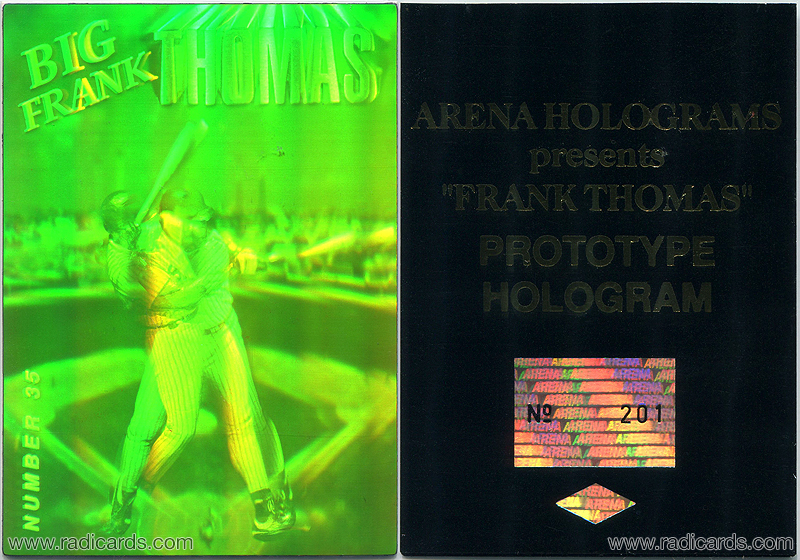
Stage 2: Approval & Production Proofs
Proofs: Let’s say the team of investors likes your prototype and hands you a check for a million dollars to put your idea into production. You take that money and begin working with a manufacturer to produce a more formal version of your product. Before you begin printing in volume, however, you ask the manufacturer to produce a few copies of your product for internal review. What they produce is a proof of your product. This is done in an effort to review things like, color layout, image quality, and overall production value. Sometimes a second pass is required but given the nature of the manufacturing output test, this is often the final step before volume production. Proofs are often unfinished in some way i.e., no color, not die-cut, uncut, bordered, serial number xx/ or 00/ etc. Here are some examples:
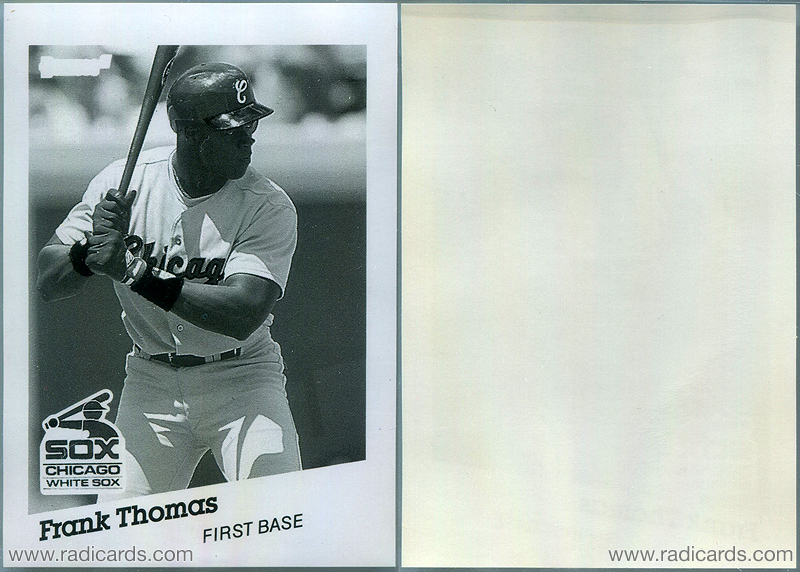
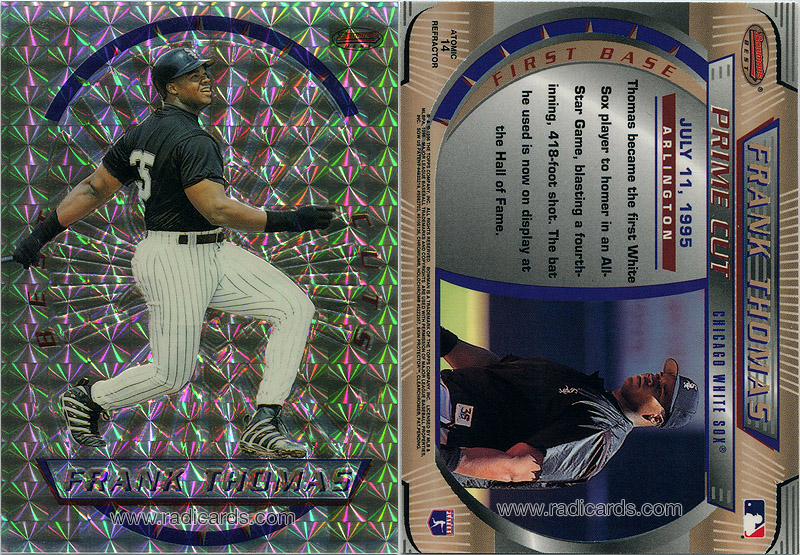
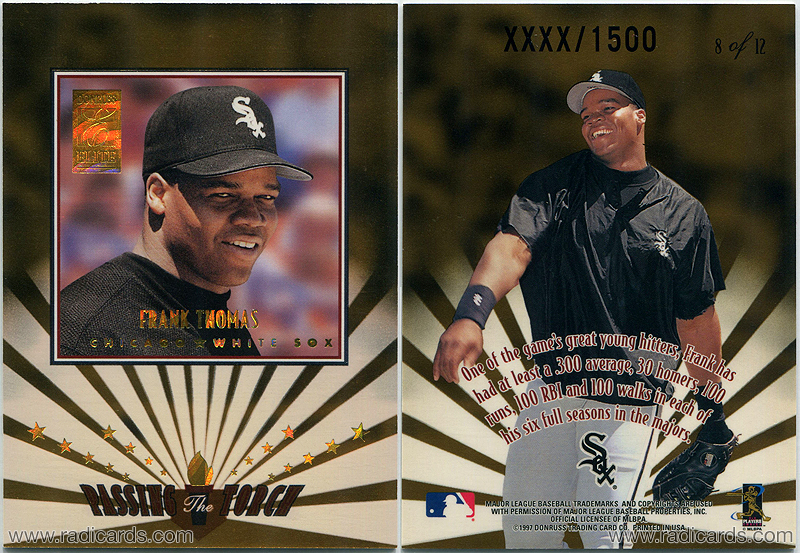
Depending on circumstance, the cards may have been made for final production but missed a step in the production process for one reason or another and were never officially released. This is what happened with Pinnacle during its bankruptcy in 1998. A lot of cards were made for release but never got the serial numbers printed on them. In this specific case these cards, that would otherwise qualify as replacements (discussed below), are actually still just proofs; the company wasn’t around to fulfill customer replacement requests anyway.
It’s because of this bankruptcy that we never got the second wave of 1998 Donruss Crusades. The cards from the bankruptcy, which are often called prototypes are actually proofs because they’re finished products, many of which only missing the serial numbers. Some cards from the officially released first wave can be found with replacement qualities such as this Travis Lee:
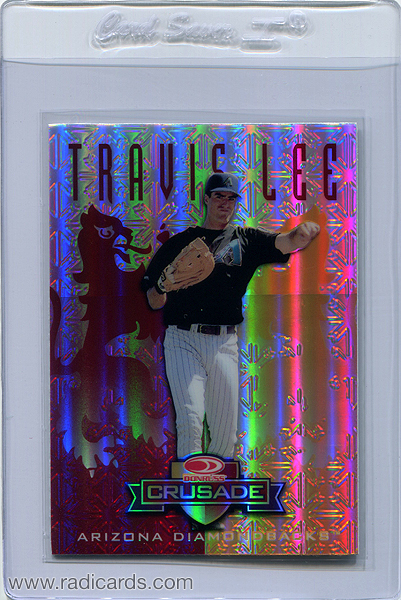
Prototypes and proofs are either kept on file for reference, or discarded. Sometimes, they’re snuck out the back door and sold on the secondary market but they are never meant for public release. Let me say that again, prototypes and proofs are never meant for public release.
It’s important here to note the distinction between proofs and replacements. Proofs are printed for internal review in pre-final to final stages before bulk production begins and aren’t meant for public consumption. Replacements, on the other hand, look identical to the pack-issued releases but don’t have serial numbers printed on them (for those cards that normally would) and are made with the specific intent to fulfill customer replacement requests.
Related article: Replacements and Why Your Card Doesn’t Have a Serial Number When You Think it Should
Stage 3: Marketing Promos, Previews, and Samples
Promos, Previews, and Samples all fall under the product marketing umbrella. For simplicity, in this section we’re gonna call these “Promos.” Now that your mass production has been printed, let’s get some samples into the market to promote the product. Promos are made specifically for external marketing. These cards typically look identical to their pack-issued counterparts but often come with some additional small change i.e., promotional print, one corner cut off, etc. Some early promos feature different photography while others appear almost indistinguishable to their pack-issued counterparts with the only difference being a very subtle image cropping change. Further, some promos are made as stand-alone items to promote businesses.
Promotional print includes words or phrases such as, “Promo,” “Promotional Card,” “Preview,” “Sample,” etc. These cards are made to promote a product or business to incentivize orders a.k.a., dealer incentives. Smart companies produce variations of these promos with different print runs to tease dealers to place larger orders. For example, the largest Order Quantities (OQs) get the rarest promos.
Beckett did this in 2002 by including sample cards under the wrapping of their annual almanacs. Most of the samples have the word “Sample” printed on them in silver foil. Larger orders came with small inventories of samples with the word “Sample” printed on them in gold foil. Due to their rarity, the gold printed parallels are often highly desired by player collectors.
This is good business and rare promo parallels make for excellent collectibles.
Previews were popular in the early 1990s and were often distributed in factory sealed sets to incentivize the Business to Consumer (B2C) market. Subsidiaries such as Triple Play, Studio, Donruss, and Leaf all made small Preview sets between the years of 1990-1993.
Due to the nature of their existence, most promos are made for public consumption. Some are rarer than others but all are meant to drive conversions. Here are some examples:
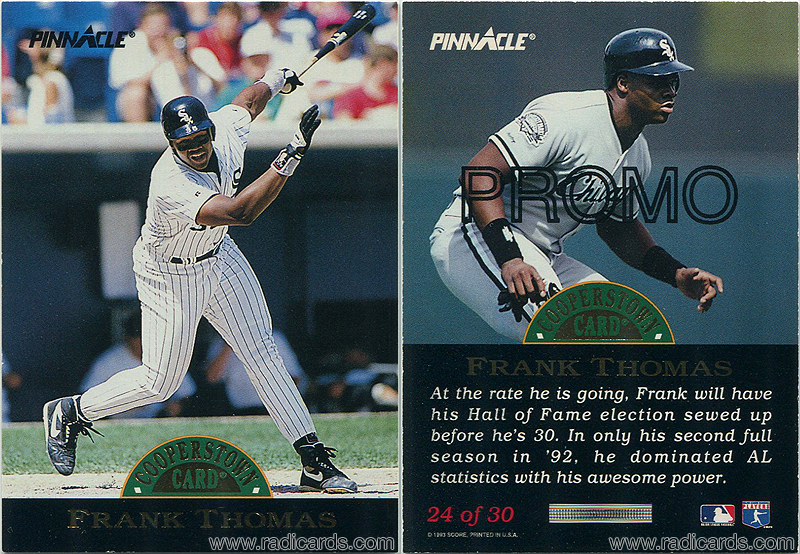
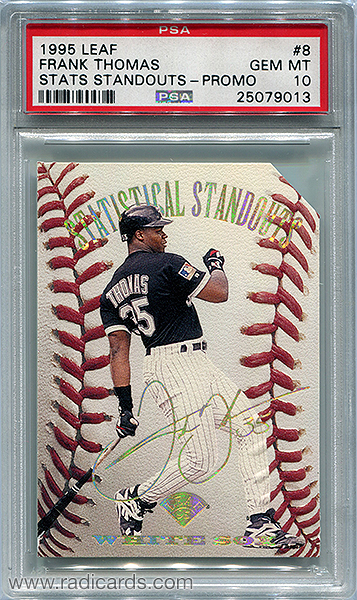
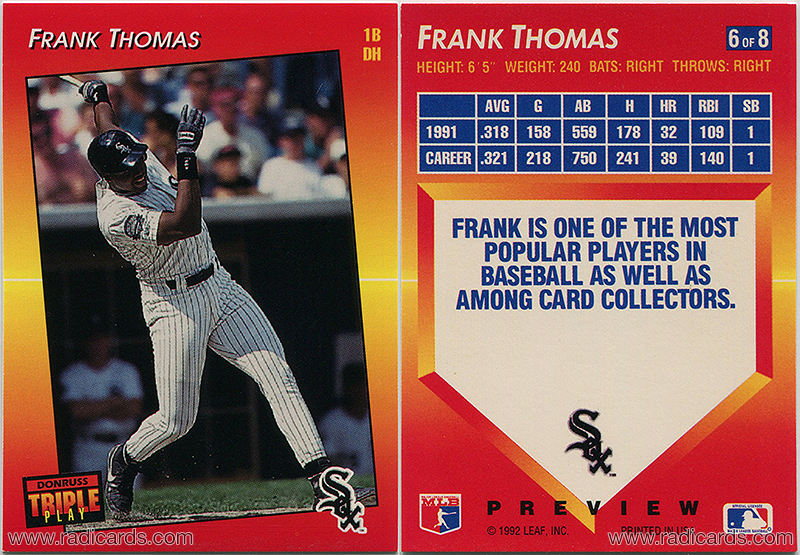

So there you have it, all types of pre-release cards fall into one of three different categories: Idea, Approval & Production, and Marketing.
To view the current eBay auctions for Samples, click here.

 Have you visited our store? Click here.
Have you visited our store? Click here.



Hey Patrick loved the article on promos and sample sports cards etc. Very informative thanks
Hi Jackie,
Thanks for the comment. I’m glad you enjoyed the article.
Thanks for this! I just purchased a card that was listed as an “employee card”, says “sample” on the back, but based on its quality would have to have been a prototype. Is there any way to confirm authenticity of a prototype? I purchased because the card that would have come from this prototype was an iconic card from my childhood, but now I don’t trust that it is what the seller has said it is.
Hi Ryan,
Thanks for the comment. Unfortunately, without seeing the card, it’s difficult to suggest any useful information regarding authenticity confirmation. If it were my card, however, I’d look for another example and compare the two in an effort to identify differences. I hope this helps.
I have a babe ruth prototype. How do I value. I’m unable to find another like it
Hi Debra,
Thanks for the comment. The best thing to do, and if you haven’t already, is to check eBay Completed Sold listings. That will give you the most accurate understanding of current market value. If a comp doesn’t exist of your card, look for others like it and estimate accordingly. If you need instructions on how to do this, search “eBay Completed Sold” in the search bar on our site to find an article covering the associated instructions.
@Ryan My uncle was the VP Buyer for a large distributor for many years and also had worked many years with a candy and confections distribution company. He had dozens of prototype marked cards, often with the sales sheets, from the original company branded folders that was sent to him. During my research on these prototype cards I found a website that actually list prototypes, sales/marketing sheets, errors, packaging, sets,…etc with images. The site is called The Trading Card Database or TTCD.com. The site is easily found with a duckduckgo search.
Hi,
Thanks for the comment. I think you mean http://www.tcdb.com.
I have a few cards that I can’t figure out a price on. Was wondering if I could get some advice.
They are 2019 Panini Contenders. 3 cards I pulled.
1. Bo Jackson (side 1) Drew Brees (side 2) both sides have Brees info on them.
2. Phillip Rivers (side 1) Gary Jennings (side 2) rookie contender. Jennings info on both sides.
3. Round 1 numbers Murray and Haskins
(side 1) Darius Slayton (side 2) both sides have Haskins and Murray info.
I pulled them in 2019 and held on to then because nobody can give me a straight answer. I can send pics if need be.
Thank you for your time
Hi Joshua,
Thanks for the comment. What you have appear to be factory defects. While we don’t offer valuations, you’re free to put them on eBay and let the market dictate their values. Good luck!
I have a Derek Jeter card, no team name or team logo on it just his picture, the back has a description of some career highlights, in the top right corner it says “prototype”. I can’t find any information on iy
If you can send me an image of your card, I’ll have a closer look at what you have.
Hi, I have a 2000 Tom Brady
Bowman R.O.Y. promotional card.
There was only 250 of them made.
Is there any value to this card?
(His name is in gold foil,
not in black).
I’ve checked ebay for the pricing on
the 2000 Tom Brady R.O.Y. Promo card.
But none of the ones on Ebay have
his name in gold foil. So where
would I go from here?
Hi Tom,
Thanks for the message. If you’re looking for current market value for you card, my advise would be to just keep an eye on eBay. Since Tom Brady is a marquee player, I’m pretty confident value goes without question.
I have proofs from Fleer and their bankruptcy in 2005 before they were acquired by Upper Deck. These are error proofs that weren’t sent around to all the departments and checked for errors then initialed and sent off to the print. Please email me with any questions at [redacted]
Hi I have a Wade Boggs Topps Stadium Club card 1993 #5 with SAMPLE on the back and I can’t find any info on it. Any suggestions where to look?
Hi Tracy,
Thanks for the message. If your card has the word “Sample” printed on it, it was likely produced to promote the product leading up to release date, which is the general format for most Sample cards.
Great article. I have a few 1997-98 Donruss Elite Die Cut hockey cards. Cards like Mike Modano, Paul Kariya and a few more. They are all XXX/100 number. I can’t seem to find a value for Mike Modano. Do you think these cards a worth getting graded? Are they even worth anything?
Hi Tomas,
Thanks for the comment. I’m at least partially confident in assuming that the cards you have are worth something although I don’t provide value estimations. In terms of grading, that’s up to you.
Tomas , I’ve been trying to find info on a Jaromir Jagr 1997-98 Donruss Elite Prime Numbers Die Cut card. All I see info on is like you mentioned XXX/266 or Promo/266. I see allot PSA 10 for around $60. Mine is a 044/266 and I must of purchased it when I was still buying cards with my young son at the time and the shop owner put a sticker on the outside of the sleeve protector with the price $150 and a comment “Only 60 Made”. I was able to verify although the edition was limited to 266 the actual number of cards printed were only 60 as stated. Maybe so rare nobody ever talks about them.
I’ve got a 2002 Peyton manning card with sample printed in silver foil on the back. Can you tell me is this a significant card or common? Thanks
It’s a donruss #37. Forgot to add that to my comment/ question. Thanks again
Hi Robert,
Thanks for the comment. In 2002, Beckett included sample examples of some Donruss base cards in with their annual almanac. The word, “Sample” was printed in silver foil on most of them but some could be found with this text printed with gold foil, which are considerably rarer. While it’s a bit odd to see a Donruss issue from 2001 carry this characteristic, that may be the case here. Without seeing it, however, I’m unable to confirm this. If you’d like to share an image of the back of the card, you can do so through our Contact Us page.